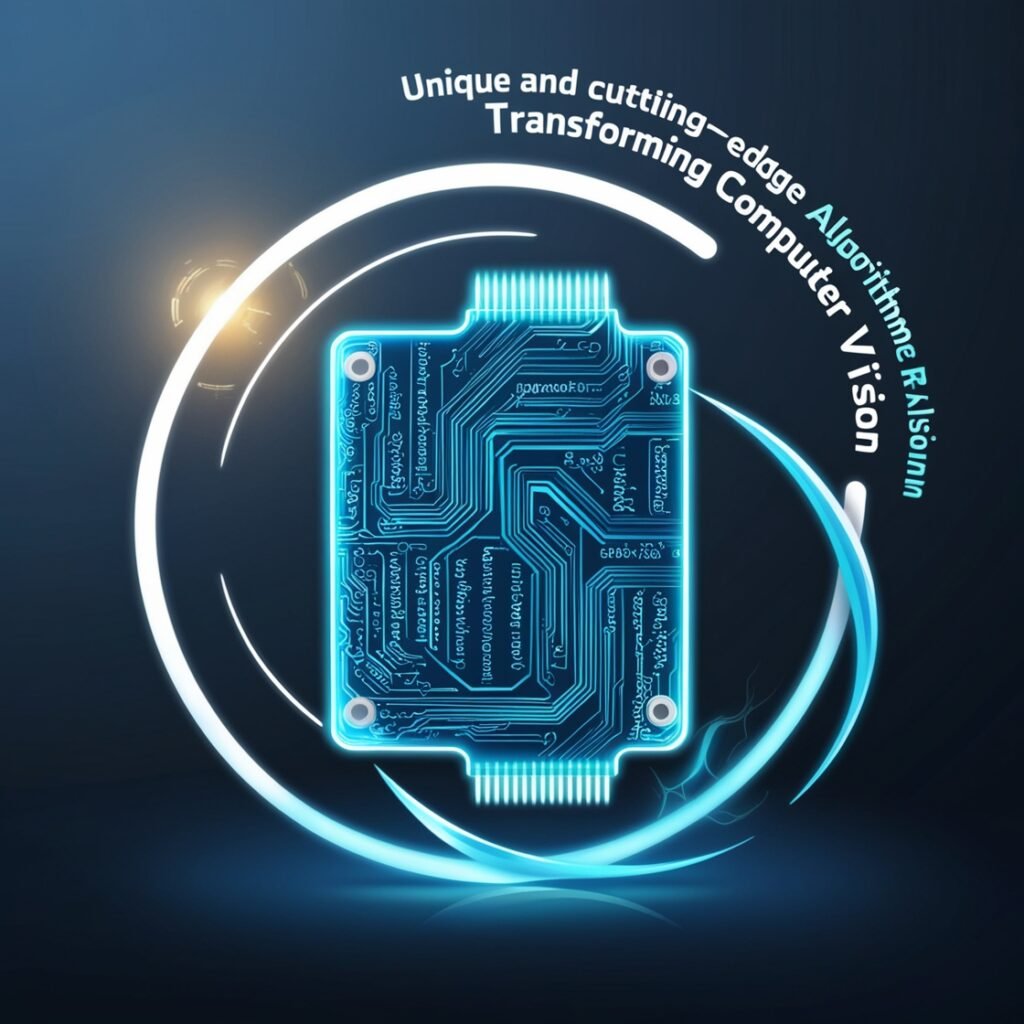Introduction
Computer vision is a branch of Artificial intelligence is the effort put out to enable computers to understand and evaluate visual inputs. It is worried with the calculation to detect patterns, detect shapes and make meaning of the imagery scenery. Computer vision has gone through many changes over its more than six decades in existence because of developments like machine learning and deep learning.
It is now common in application that range from self-driving cars to facial recognition, medical imaging, and agriculture monitoring. The expected benefits of both companies and consumers and product uniqueness have made computer vision solutions essential in organizations. However, there are still some issues, for example, a large amount of data is needed and the analysis of visual data is not very easy.
Is computer vision an AI?
I’m answering these questions once and for all in this blog
Definition
Computer vision is that branch of artificial intelligence that allows the computer to analyze and make sense of data or information received from the world in visual format. It deals with the tasks related to the identification and analysis of useful data, which is essential in images or video sequences. It is aimed at following the human sight to develop the capacity of machines to distinguish structures, know objects, and make decisions based on things it sees.
Now it is time to see how AI ties into the scheme of things when it comes to Computer Vision
Computer vision is not a stand-alone concept, but subfield of AI that includes other areas, such as natural language processing, speech recognition and many others. Computer vision has been enhanced by the integration of artificial intelligence and has proven the fact that computers are far superior to humans in terms of capacitive visual processing. Computer vision paired with AI to come up with the following applications; self-driving cars, facial recognition, diagnoses and medical images, and robotics. The examples shown above prove the exceptional improvement of the computer vision applications when integrated with AI that crease efficiency, enhance accuracy, and reduce costs for organizations in different sectors.
History and Evolution
The fundamentals of the computer vision field date back to the beginning of the 1960s where efforts were being made to give ability to machines to analyze and understand images. The first developments were relatively simple and concerned with the primary image processing and the patterns which could be sensed. The main advancement took place in the early 1980s with the formulation of algorithms on object recognition.
However, due to the advancement known as deep learning back in the 2010s, particularly convolutional neural networks CNNs, saw a more prolific performance boost to image classification tasks. The availability of big datasets including ImageNet also boosted the prosperity of the sector and provided an environment to deploy more accurate models and solutions.
Study of Computer Vision
Computer vision can be described as a subfield of AI which allows computers to analyze and understand images and videos. It has gone through many changes over the period of 6 decades and can be used in self-driving cars, facial recognition computers, medical imaging, agricultural monitoring. Lastly, one should note that due to factors such as extensive datasets and interpretation difficulties, computer vision has the potential to revolutionize some industries and make our lives better. Currently the global AI market work is expected to be at $41. 11 billion by 2030.
Applications of Computer Vision
1. Autonomous Vehicles
Self-driving cars require the use of computer vision in their development. It provides vehicles with an ability to identify objects which includes pedestrians, traffic sign, and other cars. From cameras and sensors, autominous systems can detect and decide on the best routes necessary to travel without getting into accidents.
2. Medical Imaging
In terms of applications, the most relevant domain for computer vision is medical imaging that includes X-rays, Magnetic Resonance Imaging (MRI), and Computerized Axial Tomography (CAT) scans, to mention but a few. This way, the algorithms can detect abnormalities, help establish a diagnosis and even contribute to the subsequent treatment as it offers detailed information on the patient’s condition.
3. Facial Recognition
Facial recognition as a Biometric modality entails the use of computer vision to authenticate or search for people on the basis of their faces. It is used in security systems, access control and particularly in the tagging of social networks for the elimination of the identification processes.
4. Surveillance and Security
Computer vision works with existing security cameras by allowing monitoring of video streams in real-time. It can identify alteration in movement pattern, identify people and observe crowd movement which enhances the security in areas of mass manufacturing
and establishments.
5. Retail and Inventory Management
In retail, the application of computer vision pertains to the tracking of products and improvement of the customers experience. Some of the things that can be done include counting stocks, estimating shoppers’ behavior, and managing checkouts using recognition technologies.
6. Sports Analytics
In sports Computer vision has proved to be important for analyzing movement and performance of a player. It is useful for coaches and analysts to monitor statistics, increase the effectiveness of the strategies and develop training schemes, based on the analysis of the unique features of the playing field.
Importance of Computer Vision
The importance of computer vision is socially inclined by enhancing the mental abstraction of applications which need underlying visual intelligence in order to be performed more efficiently and accurately. Computer vision is still a growing field as new uses for the technology are discovered and developed continually thus enriching the discipline. The incorporation of deep learning and complex algorithms is contributing towards the development of higher efficiency of the computer vision systems, securely applicable in the actual world.

Future Directions
Future, the field of computer vision is expected to develop much higher, and the current research is based on the enhancements of recognition rates, a decrease in computational time and expansion of the sphere of utilizing this science. Some of these challenges include identifying small or partially occluded objects and sensory elements and working in different terrains; however, the room for improvement is present because of the progress in ML and sensor technologies. With such trends emerging, it can be predicted that computer vision will further influence industries and people’s lives.
Artificial Intelligence and Computer Vision
Artificial Intelligence (AI) is a huge umbrella that defines the technologies which have a common goal of providing machines with intelligence to make intelligent decisions or solve problems. Conversely, computer vision as a subdomain of AI deals with giving the machines capabilities to interpret a visual data from the world. It refers to the process of training computers to discover patterns within images, and videos with regards to how human beings ascertain patterns in these two forms of media.
Fundamentals of Computer Vision
1. Image Processing Basics
Image processing is a technique that facilitates computer vision where images are modified to either improve their quality or to obtain relevant information from them. They were filtering the images, enhancing the edges or segments of images and also segmenting the images as well. It means that these processes that permit improving image’s quality and isolating important point allow to analyze visual data. For instance, edge detection algorithms assist in identifying edges of an object within an image which is useful in recognizing the object in a given image too.
2. Pixel and Image Representation
The fundamentals of computer vision are also related to the program wherein the pixel is defined as the smallest point of an image. Every pixel is supposed to contain details as to color and density in formats like intensity, grayscale, RGB, and others. An image is a matrix of a number of pixels and each one of them meaning a specific value in the representation of the particular scene. Nevertheless, a knowledge of pixel depiction is still basic for the implementation of algorithms to analyze images and interpret them successively.
3. Color Models and Spaces
Colors in digital images can be presented in such systems as RGB, HSV and CMYK, which is necessary for computer vision jobs. RGB is most frequently used in display technologies while HSV is used in the colour segmentation stage. These models allow the computer vision systems to be able to interpret and analyze images in a way that is accurate for use in applications such as, object detection, scene understanding and many others. The understanding of these fundamentals aids the researchers as well as the practitioners to design functional computer vision systems that can be implemented in other disciplines like robotics as well as in medical imaging.
Image Acquisition and Preprocessing
Image Acquisition
Image acquisition is the first process in CV whereby appearance information from the surroundings is obtained and converted into digital form. This process includes pictorial, for instance, using a camera to convert light into binary data which constitutes a digital picture. These sensors may include the regular light sensitive video cameras and other unique equipments such as range sensors and ultrasonic cameras. This step is critical to the success of all computer vision applications because the quality and the type of acquired image affects the subsequent processing tasks.
Preprocessing
After an image is captured, methods are followed that help in cleaning of image and make it ready for further analysis. Preprocessing can include one or more of the following steps including noise removal, image illumination correction and contrast stretching. These techniques assist in enhancing the quality of image and the same assists assure the data that is coming through is fit for further analysis. Common preprocessing methods include:
Noise Reduction: Extinguishing irrelevant structures from images so as to interfere with the analysis. Such methods as Gaussian smoothing, for instance, are used.
Image Normalization: Correcting gamma to make all the pictures look similar to each other as it is important for tasks such as object detection.
Image Resizing and Cropping: Resizing the dimensions of the image or, the zooming in the want of the image in order to cut off the bulk of the computations and to sharpen more features.
Feature Detection and Extraction
Overview
Feature detection and extraction are core primitives of the computer vision, which help determine important components within images with significant accuracy. These features can for instance be edges, corners, textures and shapes which form the cornerstone of different applications such as object recognition, image matching and scene analysis.
Feature Detection
Feature detection is defined as the procedure of determining individual points or some region in the image which contains useful data. Common techniques for feature detection include: Common techniques for feature detection include:
Edge Detection: Ultimately, this strategy involves defining boundaries within an image from areas where the difference in intensity is vivid. Such filters can be Canny edge detector and Sobel operator, for which the definition of improved images is provided below.
Corner Detection: Targets are sharp bends that exist in image boundaries or can be seen where the direction of the boundary under analysis shifts significantly. The Harris corner detector is loved as a method to detect corners since it is rather resistant to noise and variations of illumination.
Blob Detection: This technique involves detecting areas in an image that possess certain characteristics which may be color or intensity different from neighboring areas. Filtering approaches such as the Laplacian of Gaussian (LoG), the Difference of Gaussian (DoG), etc, are used in the process of blob detection also.
Feature Extraction
Afterwards, there is the process of feature extraction where the features that have been detected are preprocessed so that they are suitable for analysis. This process includes:
Local Feature Descriptors: These ones are representations of the features that were detected and which characterize them. Methods such as SIFT and SURF, for instance, create descriptors that are robust in scaling and rotation and thus can be used in matching features between two different images.
Shape-Based Features: These features are mainly based on geometry where the characteristics of the objects depicted in an image are measure. Prewitt and Sobel are on the other hand used to detect edges and contour detection and Hough transform are used to find specific shape like lines and circles.
Texture Analysis: This includes looking at the level of contrast and difference of intensity within a specific picture. Other techniques such as Local Binary Patterns (LBP) help define the texture of regions which can be important in this case such as in face recognition.

Computer Vision: Advanced Topics
Overview
Computer vision further subtopics refer to a number of specific techniques and methods that offer added levels of sophistication to an understanding of visual imagery. These topics are more important as technology advances and permeates into all facets of life, robots, medical imaging, self-driving cars, and trucks.
3D Computer Vision
There are different approaches to describe 3D structure from images, among which 3D computer vision is aimed at analyzing three-dimensional organization of objects and scenes from different projections. Some of the basic methods include Stereo vision that involves the use of two cameras to estimate depth and Structure from Motion (SfM) which involves reconstruction of 3D models from different images. Uses are in Augmented realities where objects have to be placed correctly with respect to the physical environment and Robotics where a clear understanding of the environment is necessary.
Deep Learning in Computer Vision
Advanced learning has made a shift on computer vision since it allows the formation of Convolutional Neural Networks (CNNs) that are efficient in tasks such as classification, identification as well as partitioning of the images. These networks are capable of learning features from large data sets making them very accurate in some applications such as facial recognition and self-driving cars. The further development of deep learning took place within the context of the ImageNet Large Scale Visual Recognition Challenge which has shown that today’s algorithms can achieve human like results in many occasions.
Image Segmentation
Image segmentation is a technique in which the image is divided into smaller segments each of which can be easily analyzed. Some of these approaches include semantic segmentation where the pixels in an image are grouped into predetermined classes or, instance segmentation where the sets of pixels belonging to a particular object or class of objects are identified. This is especially important in areas such as CT/MRI where segmentation of structures is very crucial on the diagnosis and the development of the subsequent treatment plan.
Motion Analysis
In computer vision, moving object analysis leads towards coverage and description of movement patterns in the videos. There are such methods as the optical flow and the method of tracking an object’s motion. This area has finding application in surveillance where the tracking of individuals or vehicles is imperative and in sports analysis where player mobility is measured for efficiency.
Challenges and Future Directions
There are challenges such as occlusion which is the presence of objects in between the object of interest and the cameras, lighting of the objects and distinguishing minute objects. Subsequent studies will aim at enhancing system stability; incorporating artificial neural networks and other machine learning concepts; as well as extending the application fields to smart cities and healthcare sectors. They will help in the progress of the development in this area as well as facilitate creative approaches to intelligent systems.
Conclusion of Computer Vision
Computer vision as one of the subcategories of artificial intelligence is a technology that allows computers to analyze digital images and videos. These include but are not limited to self-driving car, radiology diagnosis, and robotic processes. Global AI market or artificial intelligence market is estimated to reach $ 41bn. By 2030, it will reach eleven billion with a compound annual growth rate of 16 percent.
Hiking the mount Zion total from 3 to 0% between 2020 and 2030. Computer vision helps prepare people to create unique solutions in different sectors, which study provides. Some of the concerns are related to image processing, feature detection, and deep learning. However, issues such as object recognition as well as the stability of algorithms have not yet been fully addressed fully. The limitation in associating semantics to vision is still an open issue in the field of computer vision and more research is being conducted with an aim of extending visioning to full applications.



